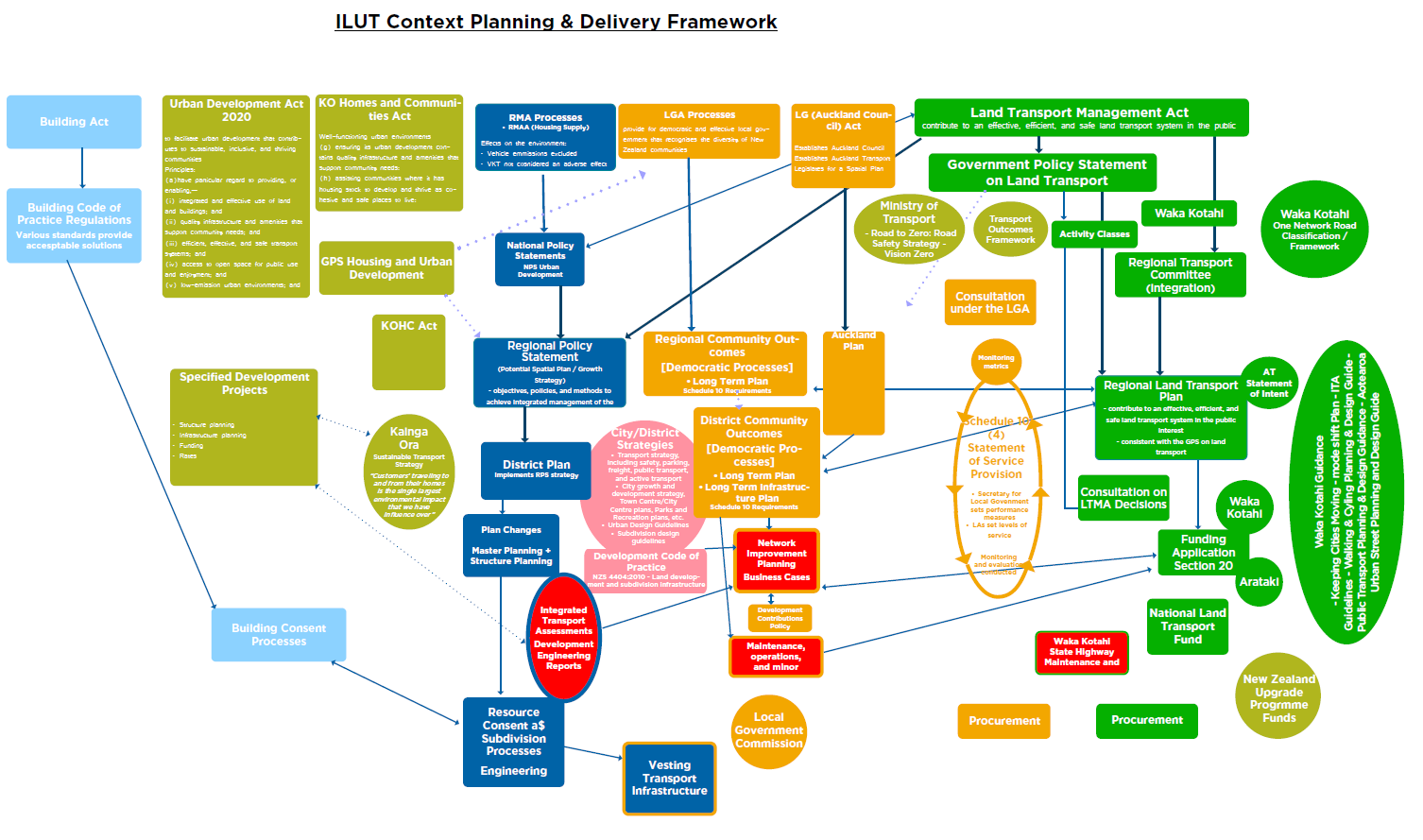Researching Integrated Land Use and Transport Planning
Thu, April 6, 2023 | ResearchWhy do development outcomes not match the vision laid out by our strategies and plans? Why do more people not have the choice to travel by alternative modes? Why are our streets not safer after decades of safety improvement programmes? Why do more people not have access to more affordable housing and a lower cost of living?
These are underlying questions that can be answered by reflecting on the effectiveness of our integrated land use and transport planning (ILUT) planning system, which is what we delved into with a recent research project we did for Waka Kotahi on ILUT planning in New Zealand.
To provide insight into the questions we did a literature review, spoke to practitioners who deal with ILUT planning processes on a day-to-day basis, and carried out a ‘stocktake’ of the existing legislation, plans, strategies, policies, and processes that direct and document the land use and transport planning system and processes.
We already knew the topic was big and there were a lot of aspects of the system to review and evaluate, but the work showed just how large and complex the ILUT system in New Zealand is. To help picture the breadth of the system we started to map out its processes and relationships – see the partial mind map below.
As can be seen from the mapping, we visualised the framework as a type of horizontally and vertically arranged matrix, with vertical streams of activity under separate pieces of legislation, and horizontal relationships between these.

Initial mind map of the Integrated Land Use and Transport Framework. View full image here
One of the outcomes of the work was to define key barriers to good ILUT planning and highlight areas where future work would have the greatest impact on improving outcomes. The crucial barriers we identified related to:
- Status quo bias
- Tension between policy and legislated requirements
- Complexity of existing framework
- Inconsistent quality of local government strategic planning
- Uncoordinated national government policies and legislation
- Capacity challenges at local government level
Some of the insights we found most interesting arose around:
- defining ILUT planning
- indicators of good ILUT planning
- the role of good territorial authority integrated planning
- the role of social acceptance of change
We will share more of the findings in detail with future articles soon.